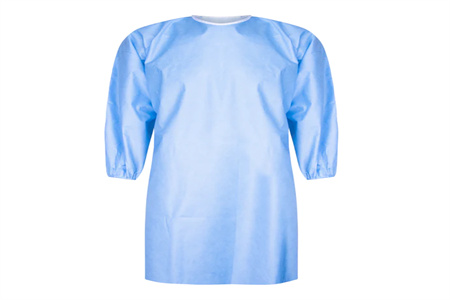2023/6/16

A Comprehensive Guide to Isolation Gown
Medical isolation gowns are used when you need to limit the spread of germs or protect your clothes. These are not just for doctors and nurses; anyone who’s ever been in a hospital can tell you that these gowns aren’t optional! You’ll find these in almost every area of the hospital, from the front desk to patient care areas. Even if you don’t have direct contact with patients or medical equipment, these isolation gowns still help keep the germs away. When used correctly and frequently, they help stop infections from spreading among patients and staff members. Isolation is necessary because some people can be carriers of germs and viruses (also known as pathogens). People who are carriers can also spread these pathogens to anyone they come into contacts with, such as friends, family members, care providers and even visitors. If someone is a carrier of something, then it’s always best to keep them isolated to prevent it from spreading further. In many cases, this means wearing an isolation suit or gown until it’s no longer needed.
What is an Isolation Gown?
Infection prevention is a critical aspect of patient care in hospitals. For this reason, all healthcare workers, patients, and visitors are encouraged to wear an infection prevention gown when they are in a hospital room. Healthcare workers wear a gown when they are treating patients, allowing them to see the wounds and examine the patient without exposing themselves to germs on the patient’s skin. Patients wear a gown when they are being examined to protect the doctor and healthcare workers from germs on the patient’s skin. Isolation gowns look like regular hospital gowns, but they have a zipper on the front that goes from the neck to the crotch. This makes the gown more secure and helps keep people from walking out of it. There are also more secure gowns that have buttons instead of a zipper. Isolation gowns are usually dark so you can’t see through them. They are made of a thin material that is meant to be worn against your skin. They cover the top and shoulders but don’t go past your elbows or knees. Some gowns have ties so you can keep them around your neck or wrists.
Different Types of Isolation Gowns
There are different types of isolation gowns: light-colored gowns, dark-colored gowns, gowns with long sleeves, gowns with short sleeves, gowns with sleeves that go past your elbows, gowns that go to your knees, gowns with a hood, gowns with a back, gowns with a front zipper, gowns with a tie, gowns that zip from neck to crotch, gowns with pockets, gowns with elastic bands around the wrists, gowns for health care workers only, gowns for patients only, gowns with elastic bands on the ankles, gowns with elastic bands on the wrists.
When to Wear an Isolation Gown
When you need to wear a disposable isolation gown, you are in an area with a high risk of spreading germs. An isolation room, a health care unit, a surgery room, a lab, a recovery room, a surgical waiting room, and a dialysis room all have a high risk of spreading pathogens. You should also wear an isolation gown when you are in a high-risk environment, such as when attending a birthday party, at a school event, at a sporting event, during a religious ceremony, at a wedding, at a funeral, while traveling, during a military operation, while camping, during a natural disaster, when visiting someone who is sick, when cleaning up after an accident or being near a person who has been sick.
How to Put on an Isolation Gown?
When you put on an isolation gown, you should put it on from the top and not the bottom. When you button the gown from the top, it helps keep it from coming off when you bend over. The best way to button the gown is by grabbing the neckline, pinching the elastic, and then pulling it over your head. To button the gown from the bottom, push the elastic at the waistband down and then pull the gown over your head. Make sure the gown covers your arms and your shoulders. The gown should cover your elbows and knees. If the gown doesn’t go low enough to cover your ankles, you can put socks or pants over your shoes. When you are done buttoning the gown, make sure the zipper is closed and zipped all the way to the top.
Reviews of Isolation Gowns for Healthcare Workers
While an isolation gown provides some protection from germs, you will also need to wear gloves, a mask and goggles when dealing with an infectious patient. If you are someone with a high risk of infection, then you should also wear a gown, mask, gloves, and goggles for each of those tests. Make sure you wash your hands well with soap and water before and after touching patients. If you are at a high risk of infection, it is also a good idea to cover your coughs and sneezes by covering your mouth and nose with a tissue.




 WhatsApp
WhatsApp
Send us your message
You can send an email asking for the price and detailed information of this product. We will reply you as soon as we receive your email